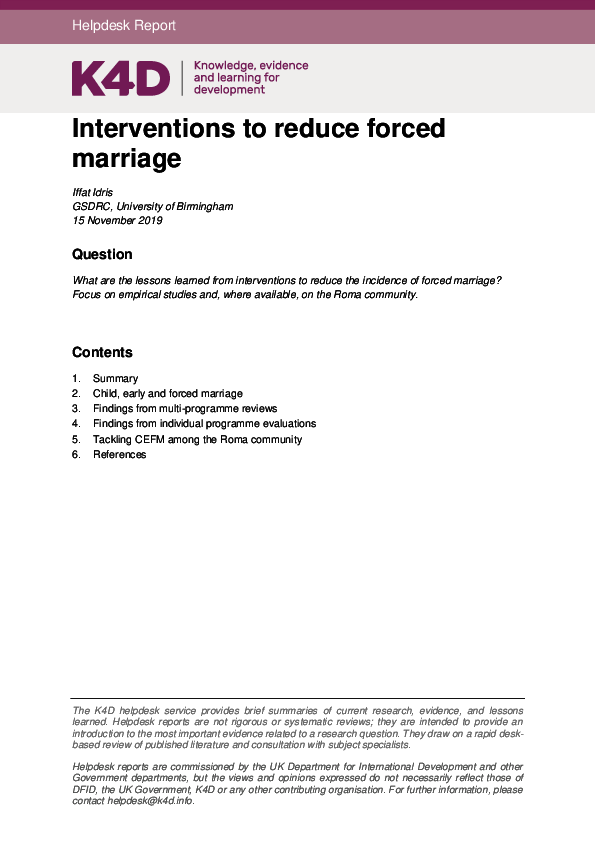
Study: Research
Interventions to Reduce Forced Marriage
Publication year:
2019
English
Format:
pdf (482.7 KiB)
Publisher:
K4D, Knowledge, Evidence, and Learning for Development
This review drew largely on academic papers as well as reports by international development organisations. Evidence and hence lessons on how to combat forced marriage are limited and sometimes contradictory. Overall, the literature points to a number of approaches that can be effective, notably: empowerment of girls; community approaches to change social norms and attitudes on child marriage, and economic incentives (for girls and families); and, alternative opportunities (notably education, and income generation). Legislative approaches appear to be the least effective in combating child, early and forced marriage. However, different approaches need to be implemented together in order to bring about sustained change.
Child and early marriages are viewed as forced marriages because child spouses are considered incapable of giving full consent. The literature predominantly uses the term child marriage or child, early and forced marriage (CEFM). This review found negligible literature using just the term ‘forced marriage’, and hence it too uses the term CEFM. While both males and females are affected by CEFM, the literature refers almost exclusively to combating CEFM in females. CEFM occurs in many countries, but is most prevalent in South Asia and Sub-Saharan Africa, and disproportionately affects females. CEFM is a human rights violation and an impediment to sustainable global development. It is fuelled by diverse social and economic factors, the most common being poverty, gender inequality and conservative social norms.
Read full abstract
Authors
View & Download
English
1 Documents
Document information
Authors
Format
Content type
Rights
© Author/Publisher
Keywords
Found a mistake? Help us improve!
If you have noticed a document assigned to the wrong author or any other inaccuracies, let us know! Your feedback helps us keep our data accurate and useful for everyone.
Share
Link
